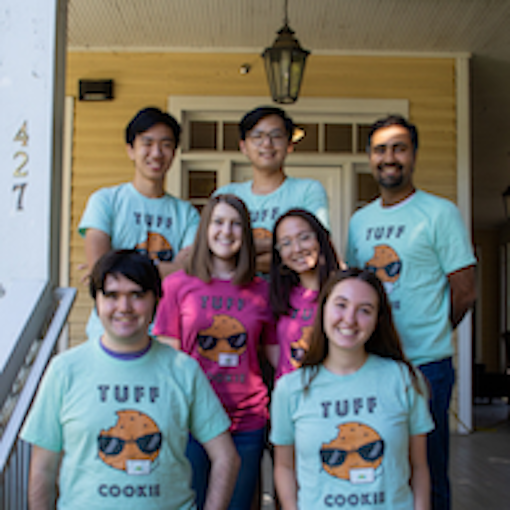October 2021 Newsletter
William & Mary’s new strategic plan starts with these words: “William & Mary aims to address global challenges, forge dynamic partnerships to fuel positive change and model democratic ideals to extend its influence in the world.” The first bullet point below this goal emphasizes the need for “research of consequence” — a goal that GRI advances across ten multidisciplinary labs and robust programming that puts our researchers in touch with partners beyond the ivory tower.How do we create research of consequence? The items in the newsletter below provide numerous examples of research that matters to specific GRI partners — among them, a mobile technology company providing health information to its customers, the Bill & Melinda Gates Foundation deciding how to allocate its resources, and the U.S. Department of State making decisions about how and where to compete or cooperate with the Chinese Belt and Road Initiative.But what ecosystem makes such applied research possible? I am struck by the entries in this newsletter because they are so firmly grounded in basic research, which is published by and for specialists in peer-reviewed journals and books. This is how new knowledge is shared by scholars. It turns out, the people who have the bleeding-edge skills to publish in the top scholarly outlets are ideal collaborators for external partners and are the people we want to inform public and policy debates! Steve Hanson’s essay in The Hill, a widely-read daily in DC policy circles, is based on his analysis of the global populist wave published in Perspectives on Politics. Phil Roessler’s explanation for inequality in Africa was published in the American Political Science Review, the top journal in his field. Ammar Malik, Brad Parks, and their AidData co-authors have just published a new data set and report, Banking on the Belt and Road, that has generated hundreds of media stories raising W&M’s profile as a research powerhouse — but that is grounded in four years of basic research that will shape the production of knowledge in multiple disciplines for years to come. These are only a few examples of GRI’s applied and public facing research, which emerges from high-quality basic research. I’m encouraged by the stories below, but also by the commitment of William & Mary leadership to build an ecosystem that supports even more and better basic research.All this talk of research too serious? See photos of our homecoming BBQ. We still have fun, and it was great to see so many of you at 427 Scotland Street. Best, Mike
![]()
New analysis from AidData explores China’s geo-economic strategy before and after the introduction of the Belt and Road Initiative in 2013, detailing how spending patterns, debt levels, and implementation issues have evolved over time. The Banking on the Belt and Road report captures 13,427 Chinese development projects worth $843 billion across 165 countries from 2000-2017. Leveraging insights from the most comprehensive dataset of its kind, the report generated widespread media coverage, as highlighted below.![]()

China: Big Spender or Loan Shark?

Hidden Debt on China's Belt and Road

China's Labyrinthine Foreign Loans

Digital Inclusion & Governance Lab
With the launch of the Digital Inclusion & Governance (DIG) Lab, Directors Philip Roessler and Fiona Shen-Bayh have continued examining social and economic consequences of digital technology, such as the mobile gender gap in Tanzania and Malawi. A William & Mary News article includes key results from initial projects and outlines what’s to come.

Digital Inclusion & Governance Lab
In early October, Facebook’s six-hour shutdown illustrated the risks of overdependence on a single platform, as ARC and DIG Lab Director Philip Roessler explained in an ABC News article. Facebook and its apps — including WhatsApp — are critical pieces of the communication infrastructure in emerging economies, Roessler described.

International Justice Lab
In the International Journal of Transitional Justice, IJL Director Dr. Kelebogile Zvobgo and Research Fellow Daniel Posthumus '24 examined past, present, and proposed truth commissions to address racial injustice in the U.S. — an "overlooked but significant case." The authors also offered a model for reflexivity in transitional justice research, especially for quantitative work.

GRI Affiliate Steve Hanson
In a co-authored article for The Hill, Vice Provost for Academic and International Affairs and GRI Affiliate Steve Hanson used his research on patrimonial rule to explain the difficulty of implementing public health mandates. Rejection of standardized health measures symbolizes a global decline in trust for rational, apolitical bureaucracies, the authors concluded.

Africa Research Center
Through cutting-edge research using over 10,000 contemporary and historical titles in about 370 African languages, ARC and DIG Lab Director Philip Roessler uncovered how the cash crop and printing revolutions shaped Africa’s contemporary ethno-political landscape. His collaborative work was published in the American Political Science Review.
AidData
As the Taliban strengthened its hold in Afghanistan, AidData's Ammar Malik and Justin Schon reflected on the events that led up to a surging migration crisis. Their article in The Hill outlines "warning signs" that should have prompted global leaders to respond by offering humanitarian aid and enhancing visa and asylum processing capacities.

Project on International Peace and Security
On the Center for International Maritime Security’s podcast, PIPS Fellow Nitya Labh '22 outlined how China's island-building capabilities can be used for development projects around the world, providing Beijing with a new tool for building influence abroad. Insights from her PIPS white paper informed the conversation.

Teaching, Research & International Policy Project
In a blog post, Teaching, Research & International Policy Project Senior RA Maggie Manson ‘22 used snap poll data to outline the international trends and problematic policies that have resulted from neoliberalism. A shared theme between numerous outcomes, Manson wrote, is that economic incentives drive human-centered policy

GRI Summer Fellows
Ten students worked as 2021 GRI Summer Fellows under the guidance of faculty mentors, advancing research on health conditions and climate in Indonesia, data science for sustainable development, models for student movement on campus, and more. New posts on GRI’s blog summarize key takeaways from their research.

American Bosnian Collaboration Project
After a summer of teaching American and Bosnian children online, students at the ABC Project authored a white paper assessing the effectiveness of interactive learning tools. In particular, the team analyzed findings on virtual approaches to intercultural competence and student engagement.

GRI Affiliate Yu Amy Xia
A new article from U.S. News & World Report features insights from GRI Affiliate and Professor of Business Analytics Yu Amy Xia, who shares expertise about the appliance market. Purchasing large appliances, such as refrigerators or dishwashers, can usually be done for lower costs at certain times of year, she explains.

AidData
Over the past four years, more than 100 undergraduate and graduate students conducted research that made AidData's new report, Banking on the Belt and Road, possible. A blog post on The First Tranche outlines how students on AidData's Tracking Underreported Financial Flows team aim for policy impact.














